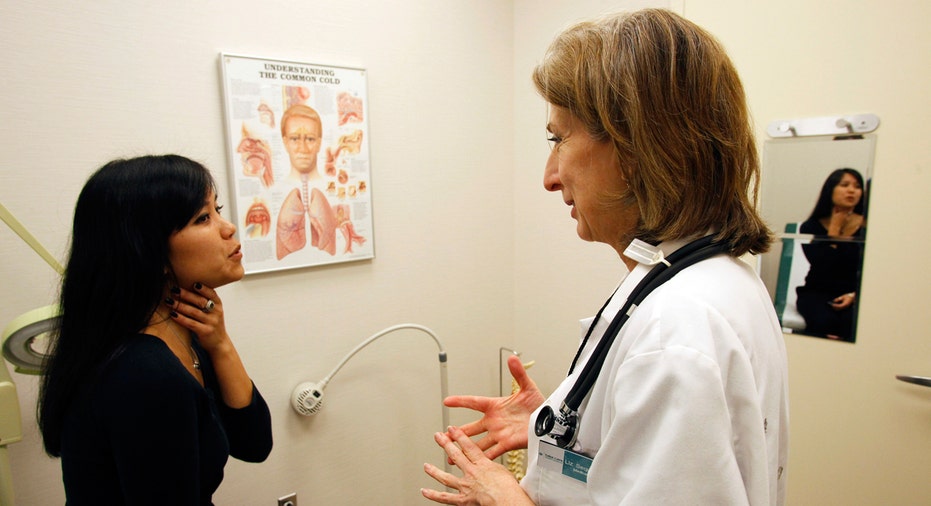A Sickening Increase in Medicare Premiums

Medicare, the federal health insurance program for those 65 and older, has several components. Part “A” covers hospital stays. Part “B” provides coverage for doctor visits and out-patient services.
The cost of Part “A” is paid by the so-called “Medicare tax” which is deducted from the paychecks that current workers earn. Employers and employees each contribute half of this 2.9% tax.
Funding for Part “B” premiums is different. Each year Medicare goes through a process where it projects how much it will spend in the coming year on visits to doctor offices, lab work and other non-hospital services. Then it divides this by the number of beneficiaries to calculate the cost per retiree.
In theory, the Federal government picks up 75% of the cost, with seniors paying the remaining 25% in the form of a monthly insurance premium. For the overwhelming majority of seniors, this is automatically deducted from their Social Security checks.
But that’s not the way it’s likely to work out this time. Next year, thanks to a perfect storm of circumstances, some retirees could see their premiums go up by more than 50% while 70% of retirees see no premium increase at all.
A Bit of Background
“For the past 35 years Medicare Part “B” premiums have been increasing at twice the rate as Social Security benefits,” says Andy Eschtruth, communications director at the Center for Retirement Research at Boston College (CRR). The problem is two-fold.
First, Medicare and Social Security use different methodologies to calculate their respective annual increases. As explained above, Medicare looks forward, estimating what its cost will be in the coming year to determine Part “B” premiums. In contrast, Social Security looks backward- the annual cost-of-living adjustment (COLA) retirees receive is based upon how much inflation we experienced in the past twelve months.
Complicating this further, Social Security measures inflation based upon the Consumer Price Index for Urban Workers, or CPI-W. This index looks at how much of their income workers of all ages spend on healthcare. This does truly capture what the elderly spend on medical care because they spend a much greater portion of their income on this category.
The result is that for decades, seniors have seen Medicare premiums eat up more and more of their Social Security checks, leaving less for other living expenses.
Medicare Math
Medicare has already calculated that Part B premiums will increase substantially next year. According to CRR research associate Anqi Chen, retirees who currently pay the lowest Part “B” premium of $104/month, would see it go to $159/month- a 53% increase!
Social Security Math
When Social Security calculates the annual cost-of-living increase retirees receive, it looks at how much the CPI-W has increased from October 1st of the previous year through the end of the following September. However, due to relatively benign inflation over the past 12 months, it’s highly likely that there will be no increase in Social Security benefits for 2016.
However, thanks to the Medicare premium increase, the monthly benefit received by a “typical” retiree would be $55/month less.
Protection Only for Some
In order to minimize this impact, years ago Congress passed a “Hold Harmless” rule. This says that if a senior’s Part B Medicare premium goes up more than their Social Security check, they do not have to pay the increase. Instead, their premium will be the same what they paid the previous year. (In this case, 2015.)
However, this only applies to 70% of retirees.
The remaining 30% have to bear the entire increase. This includes:
A- New retirees, i.e. those who will start receiving Social Security benefits in 2016.
B- Individuals who are enrolled in Medicare, but do not receive Social Security, such as some federal, state and municipal retirees.
C- “Dual” beneficiaries. These are low-income seniors whose entire Part “B” premium is picked up by Medicaid, the joint federal-state insurance program.
D- “Wealthy” retirees who already pay more for Medicare based upon their income.
This last category represents 6% of seniors. Their Part “B” premium is based on a multiple of the base premium. For instance, according to the CRR, this year a couple whose joint income was $170,000- $214,000 each paid $146.90 for Medicare Part “B”. Next year, each will see this jump to $223/month.
At the top end of the income scale, a couple whose annual income exceeds $438,000 will each see their Part “B” premium jump from $337.70 to $509.90/month- $12,000/year!
Getting More Common
“It’s an issue we want to draw public attention to,” says Chen. “It’s not the first time it’s happened.”
In fact, since Social Security COLAs were automatically tied to inflation in the mid-1970s, this set of circumstances has only occurred twice before- in 2010 and 2011. In an attempt to stave off the 2010 increase, the House of Representatives passed a bill that would have kept Medicare premiums flat for all retirees in the coming year. But according to Chen, it was defeated in the Senate.
“It’s really weird,” adds Eschtruth. “It’s not optimal public policy to have [the cost] so skewed.”
What To Do
If you were planning to begin receiving Social Security in 2016, one option is to file ASAP so that you get at least one check this year. This prevents you from falling into category “A.” However, it’s important to discuss this with your financial advisor as this could undermine your retirement income plan by causing you to accept a smaller Social Security benefit.
Other than that, there’s not much the unfortunate 30% of affected seniors can do other than contact their respective congressional representatives and complain. After all, we are heading into an election year.



















